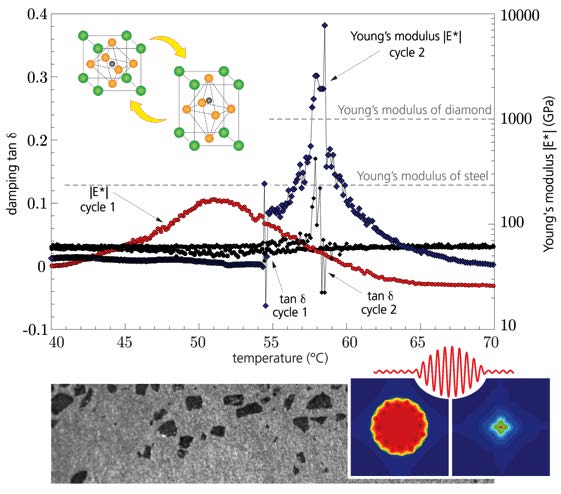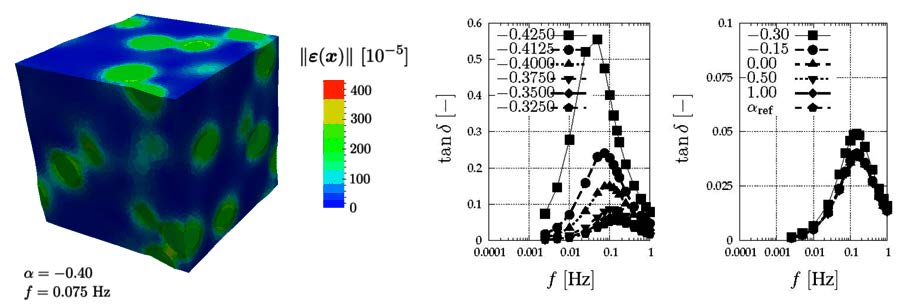Negative Stiffness
Today's challenges in science and technology call for novel materials with superior performance and exceptional properties. Stiffness, damping capacity, hardness, toughness, piezoelectric properties, or density are only a few of the many material properties of crucial interest. The combination of several materials into a composite material has gained significant interest because it allows for the careful design of novel, engineered materials with predictable and tunable characteristics.
One prime example is the elastic response of a composite, which can be uniquely linked to the elastic moduli of the composite’s constituents and the arrangement of the phases. The overall elastic composite properties are commonly bounded by the elastic moduli of the constituents. This implies the impossibility to create materials with higher stiffness than those of existing materials, as we external page showed recently by rigorous bounds on the elastic moduli of stable linear elastic composites. In the design of composites, one traditionally considers only composite phases having positive stiffness (i.e., having a positive slope of their stress-strain relation). Negative-stiffness usually implies instability in unconstrained systems. Elements with a negative slope in their stress-strain or force-displacement relation become unstable and display snapping from one stable state to another under force control. Alternatively, negative stiffness (i.e. non-positive-definite elastic moduli) can be found during small-scale instabilities when stored internal energy is released. For example, the negative-stiffness effect can be observed in experiments during phase transformations or structural transitions when one state becomes unstable and the material transforms into another. Furthermore, the buckling (or snapping) of prestressed elastic members provides for another system that undergoes instability.

Those regimes of negative stiffness described above are generally unstable in an unconstrained system. Interestingly, when one phase undergoing a mechanical instability is physically constrained by a surrounding matrix material, the negative-stiffness effect can be stabilized and one arrives at an interesting stable compound system (now comprising a negative-stiffness inclusion phase in a positive-stiffness matrix). For example, trapping particles of a phase-transforming material (e.g. particles of barium titanate) in a stiff, constraining matrix (e.g. made of a metal) can stabilize the incremental negative stiffness. Unfortunately, as we external page showed recently, the amounts of negative stiffness stabilized in this way, are never sufficient to result in extreme overall properties of the composite under static conditions. However, we have also demonstrated that the effective dynamic properties of a composite can indeed reach extreme levels in the presence of stabilized negative-stiffness elements.
Our research in this field combines theoretical analysis, computational work, and experimental investigations. On the theoretical side, the expansion of the classical theory of elastic stability to non-positive-definite elastic phases has confirmed the stability of such composites when the phase properties are appropriately tuned and has provided guidelines for stabilizing metastable phases. Further, we explore the stabilizing effect of dynamic excitation as well as the impact of small-scale instability on the effective dynamic response. Computational models provide insight into the static and dynamic effective properties of composites with phases having extreme or unusual properties, e.g. metastable negative-stiffness phases but also auxetic phases. We have shown that the inclusion of metastable phases can indeed lead to extremely high or low effective dynamic stiffness and to extreme effective damping in composites. For example, in collaboration with external page Felix Fritzen (Stuttgart) we showed computationally how negative-stiffness phases in complex particle-matrix composites can give rise to extreme damping increases.
Finally, experiments confirm the theoretical predictions of bound-exceeding, extreme mechanical properties. Sn-BaTiO3 composites have been tuned to result in a measured dynamic Young's modulus which surpasses that of diamond by orders of magnitude, while also exhibiting an extreme anomaly in the damping capacity during dynamic testing. Our dynamic experiments on ferroelectrics reveal a similar phenomenon (small-scale instability is induced by large electric fields resulting in domain switching), which leads to enormous changes in effective damping and stiffness which can be controlled by the push of a button.
Current research aims to understand and exploit the impact of small-scale instabilities on the macroscopic performance of solids and structures in a variety of ways, from the atomistic scale all the way up to the macroscopic level. Research projects include the nonlinear dynamics in snapping structures, the viscoelasticity of ferroelectrics, experiments on ferroelectric ceramics, and the multiscale design of structural solids, to name but a few.
Publications
Research Sponsors:
We gratefully acknowledge support from the National Science Foundation (NSF) through CAREER award CMMI-1254424, from United Technologies Research Center (UTRC), and from Caltech's Innovation Initiative.

